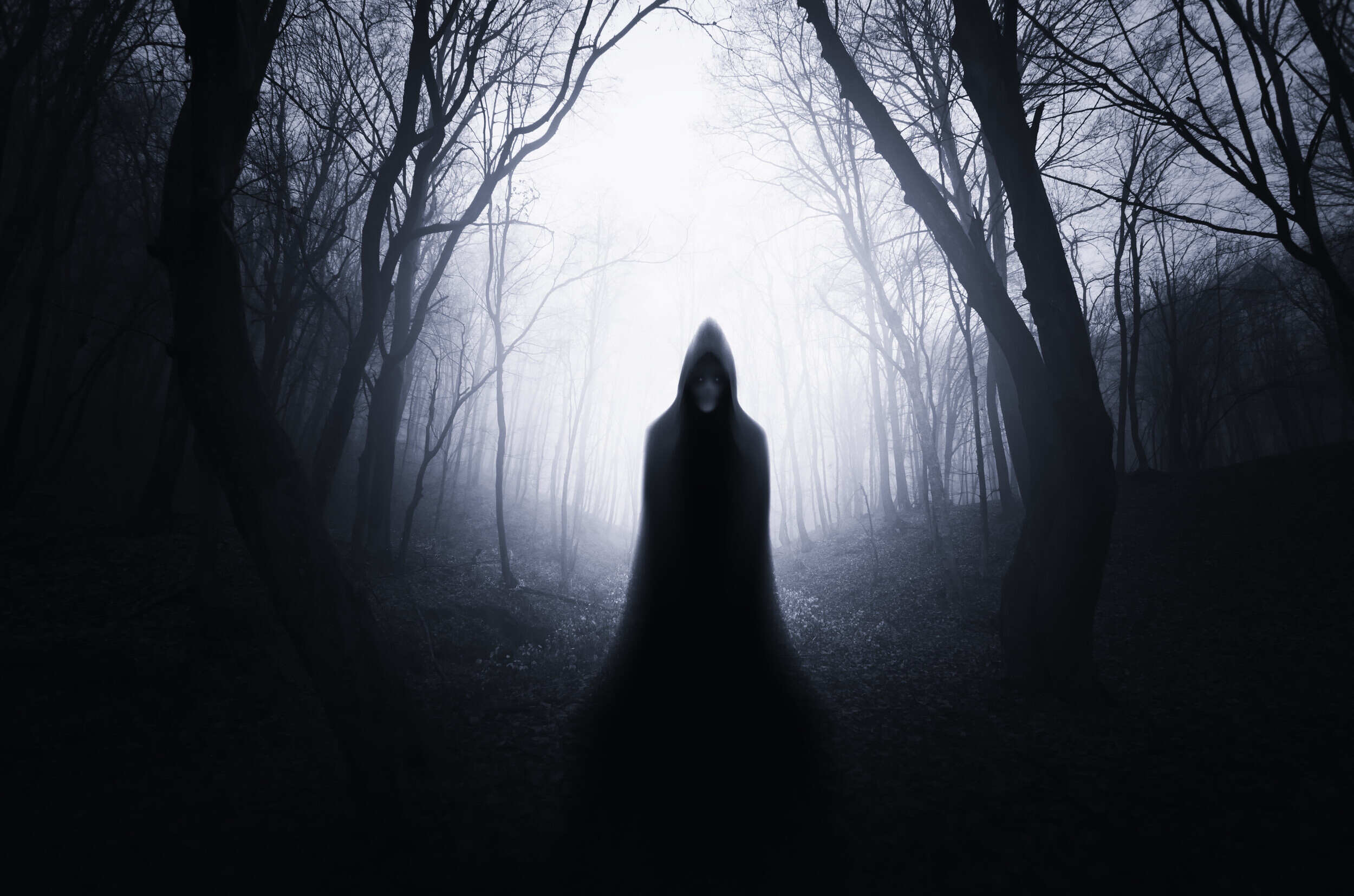
Have you ever felt like someone was watching you while hiking in the Santa Lucia Mountains? You might have encountered the Dark Watchers, mysterious figures that have intrigued locals and visitors for centuries. These shadowy beings, often described as tall silhouettes with brimmed hats and walking sticks, are said to appear during twilight hours, silently observing from a distance. Legends about them date back to the Chumash Native Americans and Spanish settlers in the 1700s. Even famous authors like John Steinbeck and Robinson Jeffers have written about these eerie watchers. Are they optical illusions, psychological phenomena, or something more supernatural? Let's explore the enigmatic world of the Dark Watchers.
The Dark Watchers: Mysterious Entities of California
The Dark Watchers are an enigmatic part of California folklore, particularly in the Santa Lucia Mountains. These mysterious figures have been observed and described by various individuals over the centuries, including local Native Americans, Spanish settlers, and American writers. Let's dive into some fascinating facts about these elusive entities.
Origins and Early Encounters
The Dark Watchers have a rich history that dates back centuries. Their origins and early encounters provide a glimpse into their mysterious nature.
-
The Dark Watchers are known by the name "Los Vigilantes Oscuros" in Spanish, which translates to "The Dark Watchers." This name was given to them by the early Spanish settlers who first encountered these entities in the 1700s.
-
Sightings of the Dark Watchers are primarily associated with the Santa Lucia Mountains, located on the central coast of California. These mountains rise from the shores of Monterey and stretch down the Central California coast.
-
The first recorded sightings of the Dark Watchers date back to the Pre-Columbian era by the Chumash Native Americans. However, there is no analogous figure in their folklore.
-
When Spanish settlers arrived in the 1700s, they also encountered the Dark Watchers and dubbed them "Los Vigilantes Oscuros." These settlers noted that the entities towered over mere mortals and appeared draped in cloaks and donned large, wide-brimmed hats.
Descriptions and Characteristics
Descriptions of the Dark Watchers vary, but certain characteristics remain consistent. These details help paint a picture of what these mysterious entities might look like.
-
The Dark Watchers are described as tall, sometimes giant-sized featureless dark silhouettes. They are often adorned with brimmed hats or walking sticks, which can make them appear even taller or wider.
-
Witnesses have reported the Dark Watchers to be up to 10 feet tall, although some accounts suggest they can be even taller.
-
The entities are typically seen during late afternoon and twilight hours when the sun is setting. Their appearance is often shrouded in mist or fog, which can enhance the illusion of their presence.
-
According to legend, the Dark Watchers are motionless observers. They are said to watch travelers from the horizon without making any movement, and if someone approaches them, they vanish instantly.
Literary References and Cultural Impact
The Dark Watchers have left a significant mark on literature and local culture. Various authors and residents have documented their encounters and beliefs.
-
The Dark Watchers have been mentioned in several literary works. Two notable authors who wrote about them are Robinson Jeffers and John Steinbeck. Jeffers included them in his 1937 collection of poems "Such Counsels You Gave to Me & Other Poems," while Steinbeck briefly mentioned them in his short story "Flight" from 1938.
-
John Steinbeck's mother, Olive Hamilton, was a staunch believer in the Dark Watchers. She would leave food offerings for them in Mule Deer Canyon, and she would find flowers in the same place on her return, suggesting that whatever was being seen was hungry.
-
In Steinbeck’s short story "Flight," the protagonist Pepé is warned by his mother to stay safe from the Dark Watchers. The story highlights the fear and respect that people had for these entities, advising travelers to ignore them and stay on the trail.
-
Robinson Jeffers described the Dark Watchers as "forms that look human to human eyes, but certainly are not human." He noted that they come from behind ridges to watch and can melt into the shadows.
-
John Steinbeck’s son, Thomas Steinbeck, grew up hearing stories about the Dark Watchers. He later collaborated with artist Benjamin Brode on a book titled "In Search of the Dark Watchers," where they explored the history and legends surrounding these entities.
Modern Sightings and Theories
Even today, people continue to report sightings of the Dark Watchers. Various theories attempt to explain these mysterious encounters.
-
A Big Sur resident reportedly saw the Dark Watchers and described them as shadowy figures that vanished quickly. This account highlights the enduring presence of these entities in local folklore.
-
A former high school principal on a hiking trip in the Santa Lucia Mountains suddenly spotted a dark figure standing on a rock and surveying the area. When he called out to the other hikers, the creature vanished.
-
Several psychological explanations have been proposed for the sightings of the Dark Watchers. These include illusions, hallucinations, and misinterpretation of natural stimuli brought on by exhaustion or isolation.
-
Infrasound, which can be generated by wind, has been suggested as a possible explanation for the feelings of uneasiness and anxiety associated with the Dark Watchers. This phenomenon can cause people to perceive their surroundings in a distorted manner.
-
The Brocken spectre, an optical illusion that occurs when the sun is at a particular angle, can create the illusion of a large shadowy humanoid figure. This theory suggests that the Dark Watchers might simply be the result of this natural phenomenon.
-
Pareidolia, a psychological phenomenon where the mind perceives a familiar pattern in an ambiguous stimulus, could also explain the sightings of the Dark Watchers. This theory suggests that people might be seeing their own shadows or other natural features and interpreting them as mysterious entities.
Cultural Significance and Local Beliefs
The Dark Watchers hold a special place in local culture and beliefs. Their presence in folklore reflects the rich cultural heritage of California.
-
While the Chumash Native Americans do not have any specific legends about the Dark Watchers, their oral traditions do mention shadowy figures that could be interpreted as similar entities. This highlights the cultural significance of mysterious figures in Native American folklore.
-
Despite the lack of concrete evidence, many people continue to report sightings of the Dark Watchers. These reports often come from hikers and travelers who experience a sense of being watched in the remote and misty areas of the Santa Lucia Mountains.
-
The Dark Watchers evoke a mix of fear and respect. According to legend, it is wise to ignore them and never to show interest, as those who approach them vanish into oblivion. This fear is deeply ingrained in local folklore and has been passed down through generations.
-
The Dark Watchers have had a significant impact on local culture and literature. They have been featured in various works of fiction and non-fiction, contributing to their enduring mystique and fascination.
-
The Dark Watchers serve as a reminder of the rich cultural heritage of California. Their presence in local folklore highlights the complex and often mysterious nature of human experience, particularly in isolated and remote areas.
-
While the sightings of the Dark Watchers are intriguing, many scientists remain skeptical about their existence. They attribute the sightings to natural phenomena or psychological factors rather than supernatural entities.
-
The Dark Watchers are an integral part of California folklore, reflecting the state's diverse cultural heritage. They represent a blend of Native American traditions, Spanish influences, and American literary contributions.
-
The Dark Watchers have inspired numerous writers and poets. Their enigmatic presence has been used as a metaphor for the unknown, the mysterious, and the unexplained, adding depth to literary works.
-
Witnesses often describe the Dark Watchers as wearing capes and wide-brimmed hats, which can make them appear even more imposing and mysterious. These descriptions add to the entity's mystique and folklore significance.
-
Some accounts mention the Dark Watchers carrying sticks or staves. This detail further humanizes the entities, making them seem more like guardians or observers rather than purely supernatural beings.
-
Many people who have visited the Santa Lucia Mountains report feeling a sense of being watched, even when they do not see anything concrete. This feeling is often attributed to the presence of the Dark Watchers, adding to their mystique and fear factor.
-
The isolation and exhaustion of hikers in the remote areas of the Santa Lucia Mountains can contribute to hallucinations and misinterpretations of natural stimuli. This theory suggests that the Dark Watchers might be a product of psychological factors rather than supernatural entities.
-
Local beliefs and traditions play a significant role in the persistence of the Dark Watchers legend. Many people in the area believe in their existence, which is reflected in the stories and legends passed down through generations.
-
The Dark Watchers have been documented in historical records dating back to the 1700s. These records provide valuable insights into the cultural and social context in which these entities were first encountered.
-
Despite the various explanations and theories surrounding the Dark Watchers, their enduring mystery remains a fascinating aspect of California folklore. The enigmatic presence of these entities continues to captivate people, inspiring both fear and fascination.
-
The Dark Watchers are an integral part of California folklore, reflecting the state's rich cultural heritage and diverse traditions. Their mysterious presence has captivated people for centuries, inspiring both literary works and local legends. While their existence remains unproven, their impact on local culture and literature is undeniable, making them a fascinating and enduring mystery in the world of folklore.
The Enduring Mystery of The Dark Watchers
The Dark Watchers remain one of California's most intriguing legends. These tall, shadowy figures, often seen in the Santa Lucia Mountains, have captivated the imaginations of locals and visitors alike. From Native American tales to Spanish settlers' accounts, and even mentions in literature by John Steinbeck and Robinson Jeffers, the Dark Watchers have a rich history. Various theories, from psychological explanations to natural phenomena like the Brocken spectre, attempt to explain these sightings. Yet, the mystery persists. Whether a product of pareidolia, infrasound, or simply the mind's tricks, the Dark Watchers continue to evoke a mix of fear and fascination. Their presence in California folklore highlights the state's diverse cultural heritage and the human penchant for the mysterious. The Dark Watchers remain an enduring enigma, captivating those who dare to explore their legend.
Was this page helpful?
Our commitment to delivering trustworthy and engaging content is at the heart of what we do. Each fact on our site is contributed by real users like you, bringing a wealth of diverse insights and information. To ensure the highest standards of accuracy and reliability, our dedicated editors meticulously review each submission. This process guarantees that the facts we share are not only fascinating but also credible. Trust in our commitment to quality and authenticity as you explore and learn with us.


